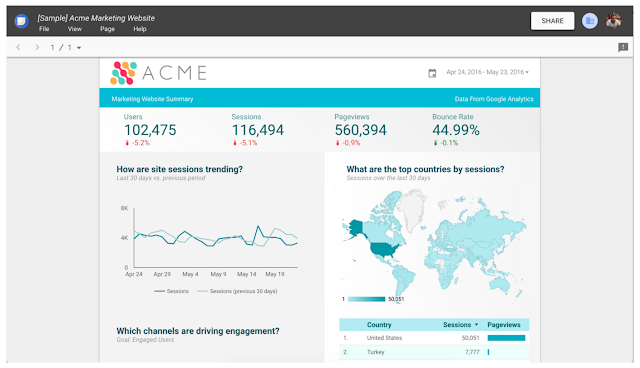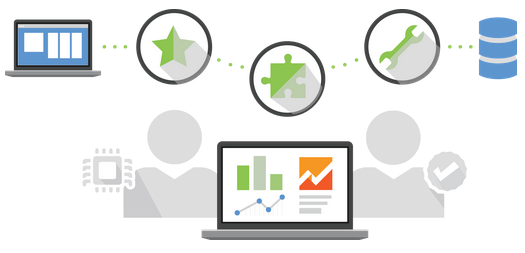Looking to sharpen your Google Analytics skills as you kick off 2017? A new full-color book is now available for analysts, marketers, front-end developers, managers, and anyone who seeks to strengthen their Google Analytics skills.
"In Google Analytics Breakthrough: From Zero to Business Impact, we strive to provide a step-by-step resource to help readers build a solid foundation for analytics competence. It starts at strategy and core concepts, extends to advanced reporting and integration techniques, and covers all the nuts, bolts, tricks, gaps, and pitfalls in between," says coauthor Feras Alhlou, Co-founder and Principal Consultant of
E-Nor. "The book is structured to offer a succinct overview of each topic and allow more detailed exploration as the reader chooses."
The book includes contributions straight from the Google team. Avinash Kaushik's foreword starts things off with a constructive mindset, and Paul Muret's cover piece takes a unique perspective on the evolution of Google Analytics from the days of Urchin. Krista Seiden lends her top reporting tips, and Dan Stone shares insights on remarketing. Industry experts such as Jim Sterne, Brian Clifton, and Simo Ahava also offer key takeaways.
At nearly 600 pages, the book is quite comprehensive, but the authors outline a few main themes below.
1- Define and Measure Success It still bears repeating: identify your KPIs as part of your measurement strategy. Map your marketing and development initiatives to the KPIs and center your analytics around your success metrics and specific improvement targets. You'll be much more likely to drive, detect, and repeat your wins, both big and small, if you always know what you're aiming for.
2- Keep Your Focus on User Journey This has multiple meanings. From a Google Analytics reporting standpoint, take advantage of the reports and features - such as Multi-Channel Funnel reports, custom segments, custom funnels in Analytics 360, and calculated metrics - that go beyond session scope and begin to approach a more complete picture of user journey.
Even more fundamentally, remember to always relate your data to user experience. Contributor Meta Brown offers specific advice on crafting a hero story to make your analytics data more accessible and impactful for all stakeholders.
3- Take Full Advantage of Google Tag Manager "When we were first outlining the book, we briefly considered dual-track native and Google Tag Manager examples ," recollects coauthor Eric Fettman, Senior Consultant and Analytics Coach at E-Nor. "Shiraz steered us to a basically GTM-only approach, which streamlined the implementation chapters and really highlighted GTM's flexibility and power."
In addition to in-depth discussions about GTM's triggers, variables, and data layer, the book examines the relatively new and perhaps underutilized Environments feature. While the publication schedule didn't allow direct inclusion of GTM Workspaces, the supplemental online materials offer a detailed Workspaces walkthrough. 
 |
| As an illustration of Google Tag Manager's flexibility, this Lookup Table variable will allow a single Google Analytics tag to populate into different properties based on hostname. |
4- Help Google Analytics Tell Stories in Your Own Language From both an implementation and reporting standpoint, Google Analytics provides a range of capabilities for customizing your data set and optimizing the reporting experience so your data speaks clearly and relevantly. Custom dimensions and data import for your content, products, and back-end user classifications will let you build more meaningful and actionable narratives. Custom channels - for paid social traffic, as an example - will certainly yield much greater insights than default channel reporting. Alternate report displays and custom reports allow you to combine and isolate the metrics that are most important for the analysis at hand.
And don't fail to take full advantage of basic features such as secondary dimensions. The Landing Pages report is good by default; Landing Pages with Source/Medium applied as a secondary dimension might reveal a whole new secret.
5- Master the Basics for Advanced Benefits in GA 360, BigQuery & Integration The fundamental Google Analytics data collection and processing tactics remain as important in 2017 as ever. You still need to implement event tracking, with a meaningful naming convention, to really understand user interaction. You must maintain consistency in campaign tagging for clarity in your Acquisition reports. In many cases, you still must apply view settings and/or filters to insure data quality in all of your Google Analytics reports.
The benefits of clean data, however, extend beyond the Google Analytics user interface. If you're exporting to BigQuery (integration with BigQuery is enabled for Analytics 360 organizations) to analyze conversions over multiple sessions by different traffic channels, the campaign tagging and channel grouping work that you have already performed for your GA reporting will again prove critical. If you're also pulling your CRM data into BigQuery to integrate with GA data and measure the effect of specific interactions – such as downloads, video views, or live chats – on customer lifetime value, you'll be doubly glad that you took the time to properly implement your Google Analytics event tracking from the start.
Going forward, as we begin to navigate through dynamic visualizations in Google Data Studio and look towards advanced solutions such as Attribution 360 and Audience 360, the competitive advantage of good, consolidated Google Analytics data, as a dataset for complementary tools and environments, will only magnify.
"We dedicate the book to our contributors, to our clients, to the team at E-Nor, and especially to our coauthor and E-Nor cofounder Shiraz Asif, who passed away in March 2016 and will always be keenly missed." For more about Google Analytics Breakthrough: From Zero to Business Impact, visit
www.gabreakthrough.com.
Posted by Feras Alhlou, Principal Consultant and Co-founder of E-Nor, Inc., Google Analytics Partner








